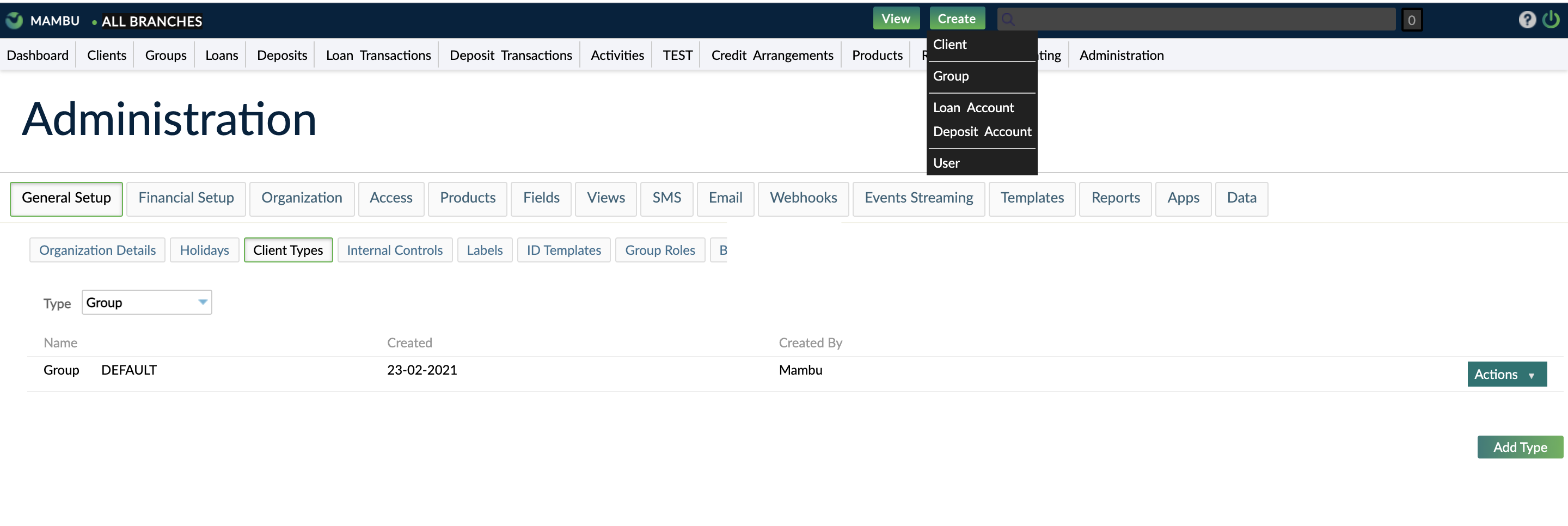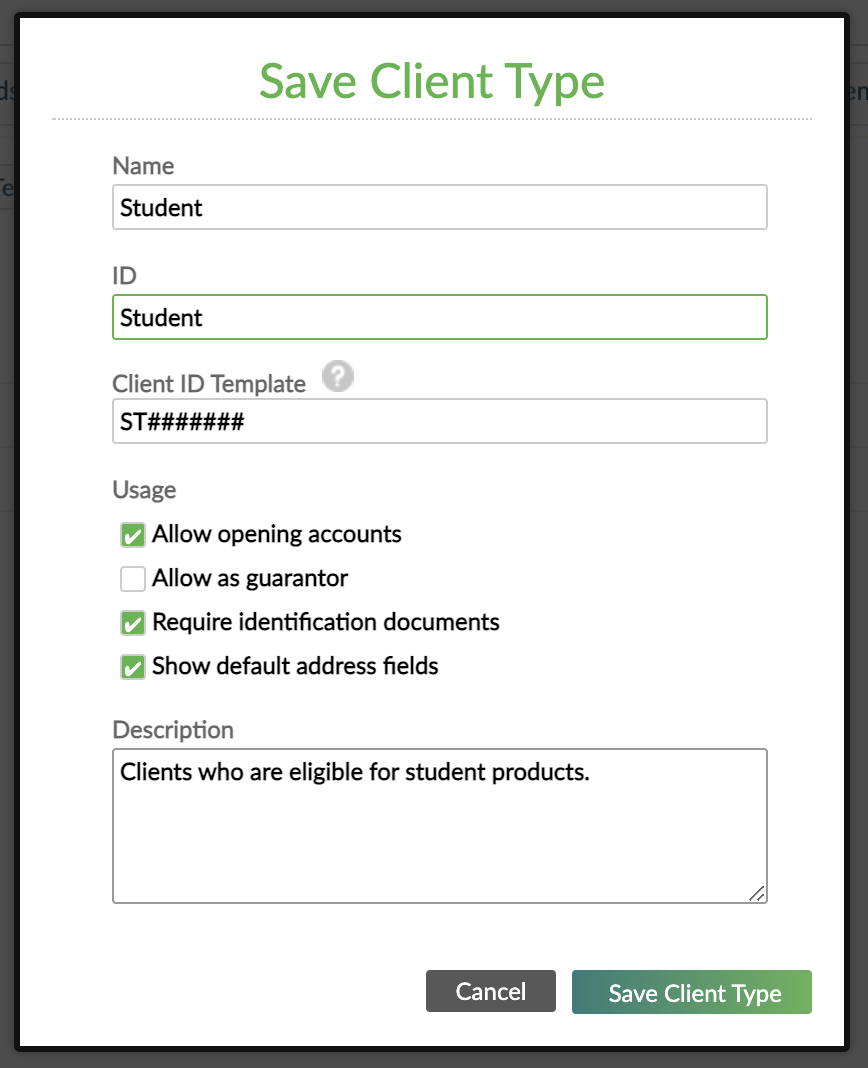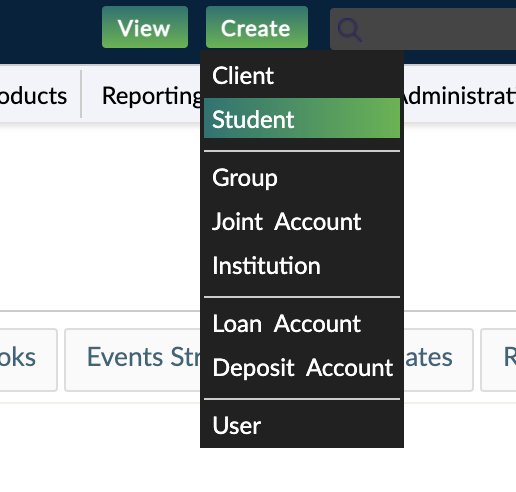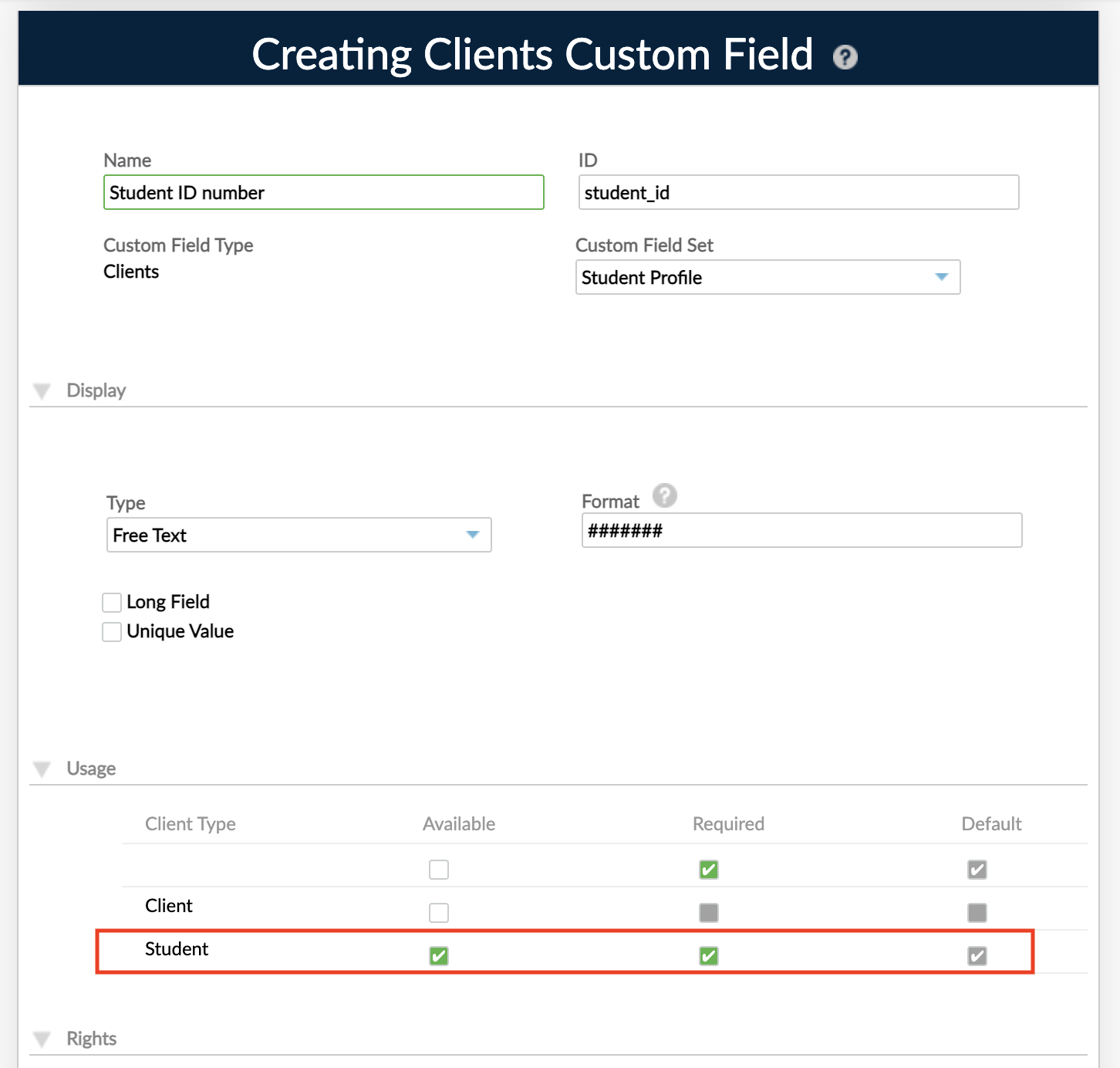- 26 Jun 2023
- 5 Minutes To Read
- Print
- DarkLight
- PDF
Client Types
- Updated On 26 Jun 2023
- 5 Minutes To Read
- Print
- DarkLight
- PDF
This page describes how to create, edit, and delete client types. For general information on individual clients and how they are used, see Clients and Groups Overview.
Every individual client must be assigned a client type during the creation process. The client type Client is available by default. You may create custom client types or modify the default type to organize your individual clients as you wish.
All existing client types are listed in the Create menu in the top bar.
If your user has the Change Client Type (CHANGE_CLIENT_TYPE) permission, you may change the CLIENT type of an individual client. For example, you may have an individual client that has a client type of Prospective Client and once this individual client becomes an active client their client type can change to Existing Client.

In Mambu we sometimes refer to client types as client roles. For example, in our Configuration as Code (CasC) implementation for client roles and group roles.
Creating client types
In the example below we create a client type called Student.
To create a new client type:
- On the main menu, go to Administration > General Setup > Client Types.
- In the Type drop-down, select Client.
- On the right-hand side of the screen, select Add Type.
- In the Add Client Type dialog box enter all the necessary information. We will cover all the configuration options in depth below.
- Select Add Client Type.

Once you have created a new client type it will be available in the Create menu in the top bar. In our example, we created a client type called Student and it is available in the Create menu.

Fields for Client Types
| Name | Description | Required |
|---|---|---|
| Name | The name for the client type. | ✔ |
| ID | The unique identifier for the client type, particularly useful for API operations. | ✔ |
| Description | The description for the client type. | ✘ |
Client ID Template (optional)
In Mambu you create ID templates to manage the identification document information you collect for your clients. These are a completely separate concept than the Client ID Template field that is part of setting up client types.
For more information about ID Templates for identification documents, see ID Templates.
Provide a Client ID Template to define the ID number length and format that will be generated every time you create a new client.
Input masks or templates are used to configure Mambu to generate alphanumeric IDs or values of a fixed, specified length, which match the specified pattern of letters and numbers.
Templates consist of the characters `#`, `@`, and `$`, where `#` specifies a number, `@` a letter, and `$` a number or a letter, chosen at random. For example, `@#@#$` will configure Mambu to generate five-character values of one letter, one number, one letter, one number, and one character that is either a letter or a number, such as `B8J4P` or `P1F62`.
Only letters and numbers may be used - special characters and punctuation are not supported.
Note that the generated values cannot overflow. When all possible values of the specified length run out, no additional values can be generated. For example, the pattern `##` can only produce 100 unique combinations, 0-99. It is important that you specify templates that will provide as many values as you may need into the future.
Allow opening accounts
This option allows the client type to open accounts. Do not select this option if you need to collect required information for example for prospective clients.
Allow as guarantor
This option allows the client type to be a guarantor.
When a loan is issued, the customer has to provide guarantees. Guarantees can be given in the form of securities such as collateral or someone can be assigned to be a guarantor. This option determines whether a client with this client type can be assigned as the guarantor for a loan.
Require identification documents
This option makes ID documentation mandatory for this client type.
ID documentation will only be mandatory if you have set up at least one ID template for which you have selected the Mandatory for Clients option. For more information, see ID Templates and Creating an Individual Client - Adding identification documents.
Show default address fields
If you select the Show default address fields checkbox, then your group creation form will include the default address fields. Otherwise, you can use custom fields to model the address fields section, for more information, see Custom fields for clients below.
Custom fields for clients
When creating a client based on a client type, the client creation form contains default standard fields but you can set it up to also contain additional custom field definitions. For more in-depth information about managing custom field definitions, see Custom Fields.
For example, for a Student client type, you can create a custom field set with custom field definitions related to the student profile.
To add custom field definitions to a client type:
- Either create a new custom field set or select an existing custom field set.
- Add new custom field definitions to the custom field set or edit existing custom field definitions within a custom field set.
- In the Usage section of the Editing Clients Custom Field dialog, for each custom field definition, select the client type to which you would like to add the custom field definition.

Example
You can create a Student Profile standard custom field set. To this custom field set, you can add custom field definitions that you will make available for your Student client type, such as:
- Student ID number
- University
- Scholarship recipient
Once you have created the custom field definitions you will see the Student Profile section in the client creation form with the respective custom field definitions. For more information about displaying fields by default or making fields required, see Custom Fields - Usage Section.

Editing and deleting client types
To edit or delete a client type:
- On the main menu, go to Administration > General Setup > Client Types.
- In the Type drop-down, select Client.
- In the list of client types, find the one you want to edit or delete and select Actions and then Edit or Delete.
You can not delete client types that are in use.


